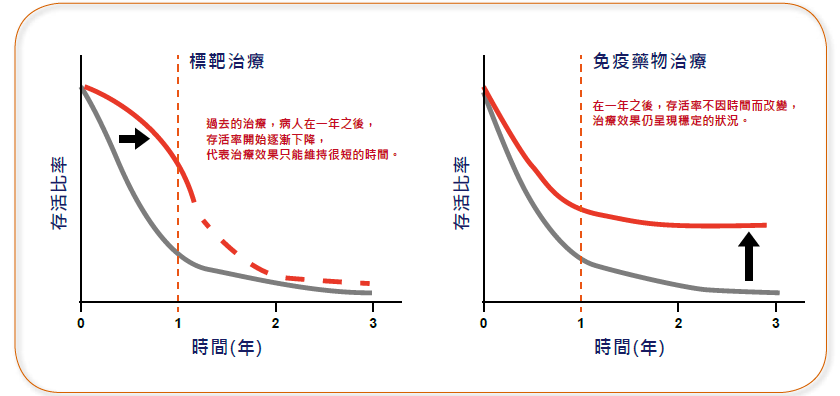
When individuals are diagnosed with cancer, they often encounter a barrage of medical terms such as "survival rates," "complete response rates," and "partial response rates." These terms may seem unfamiliar and daunting, prompting individuals to scour the internet for information. Sometimes, understanding these terms brings a sense of relief, while other times, it may lead to increased anxiety. It's crucial to familiarize oneself with key medical terms related to cancer treatment to gain insights into prognosis, which refers to the anticipated course of the disease.
.jpg)
-
Survival Rate and Overall Survival: After cancer patients undergo various diagnostic tests, including blood tests, CT scans, and biopsies, leading to a confirmed cancer diagnosis and staging, they often hear phrases like "Based on the stage, the survival rate is..." The "survival rate" observes and compares the percentage of patients who survive over a specific period. Commonly used intervals are 1 year, 3 years, and 5 years. For instance, a 5-year survival rate of 65% for stage 3 colon cancer means that, based on historical medical statistics, 65% of patients with similar staging were still alive after 5 years. It indicates the chance of survival for at least 5 years.
Additionally, there is the concept of "overall survival," which directly analyzes the average duration of survival for patients. For example, an overall survival of 10 months suggests that, on average, patients with this cancer survive for 10 months. -
Progression-Free Survival (PFS): PFS measures the time during which a patient, after receiving treatment such as surgery, chemotherapy, or targeted therapy, shows no signs of tumor progression until disease worsening is detected. This term is commonly used in advanced-stage cancers where the goal is to control cancer growth, improve the patient's quality of life, and extend life.
-
Response Rate: The response rate indicates the percentage of change in the size of solid tumors after treatment, serving as an indicator of treatment effectiveness. The categories include:
-
Complete Response: The tumor disappears entirely.
-
Partial Response: The tumor significantly shrinks.
-
Stable Disease: The tumor shows no significant change, neither shrinking nor growing. The condition is stable but does not meet the criteria for complete or partial response.
-
-
The response rate is crucial in evaluating the effectiveness of cancer treatment.
Understanding Treatment Response:
Medical professionals monitor treatment responses during follow-up appointments every 3 weeks for patients undergoing adjuvant chemotherapy or targeted therapy. They assess changes in tumor size and decide the duration of drug therapy, typically around 6 months, before determining if surgery is necessary. Effective treatments lead to tumor reduction or even the disappearance of cancer cells. For example, a breast cancer patient with an initial tumor size exceeding 5 cm may no longer feel a lump after the first round of chemotherapy and targeted therapy, demonstrating impressive efficacy. This may even result in a shift from initially planned total mastectomy to partial mastectomy, preserving the breast.
Remission and Relapse:
-
Remission: After treatment, patients may experience a reduction or disappearance of cancer-related symptoms, indicating control over cancer. Remission is often categorized as complete or partial, depending on the extent of cancer cell reduction.
-
Relapse: Relapse occurs when cancer, after initial treatment like surgery, reoccurs or reappears. It can be "local relapse," where the tumor reappears in the same organ or tissue, or "distant relapse," involving the spread of cancer to distant organs or tissues.
It's crucial to note that complete remission does not guarantee a cure. Medical advancements make it challenging for doctors to assure patients that cancer cells are entirely eradicated and will not recur. In many cases, patients may not show signs of cancer at a particular time, but physicians can, at most, state, "There are no signs of cancer at this moment."
Progressive Disease and Prognosis:
-
Progressive Disease: This term indicates an increase in tumor size, the discovery of tumors in other organs or tissues (metastasis), abnormal elevation of cancer indicators, and worsening patient symptoms.
-
Prognosis: Prognosis refers to the anticipated development of the disease. Patients are encouraged to engage in open discussions with their treating physicians to determine the most suitable cancer treatment tailored to their specific conditions, maintaining a dignified quality of life.
When facing a cancer diagnosis, individuals often inquire about the severity, life expectancy, and the effectiveness of the latest and most expensive treatments. However, it's essential for physicians to assess the pathology report, blood tests, imaging results, the patient's age, physical condition, presence of other chronic illnesses, and statistical data from similar cancer types and symptoms when formulating a treatment plan.
Some treatments may extend survival rates but come with significant side effects or financial burdens. High response rates in treatments do not always translate to a significant extension of a patient's life. Some treatments may not prolong life but can improve symptoms or alleviate the suffering caused by complications. Cancer patients are advised to actively address their situation, discuss the most suitable cancer treatment with their primary physician, and focus on maintaining a life of dignity.
標靶治療 (Targeted Therapy): In past treatments, patients experienced a gradual decline in survival rates after one year, indicating that the treatment effects could only be sustained for a short period.
免疫藥物治療 (Immunotherapy): After one year, survival rates remain unchanged over time, showing a stable treatment outcome.
存活比率 (Survival Rate): 時間(年): Survival Rate: Time (years):